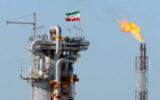The growth of gas production in Iran

According to Energy Press, Iran today considers itself one of the three giants of the global gas market, with an average production of more than 1,000 million cubic meters of gas per day. From the perspective of raw figures, the acceleration of the South Pars projects is admirable; but high production alone cannot guarantee the sustainability of power plant supply. Demand growth, natural decline in fields and hidden development crises have each cast a shadow over Iran’s gas industry.
The course of the gas production leap
Between 2003 and 2023, the country’s gas extraction capacity increased fivefold. The large South Pars, North East, Kangan and Assaluyeh projects caused Iran to rise from seventh to second place in production globally.
However, this great leap is faced with the following realities:
Declining production from old fields (such as Masjed Soliman and Haftkal); slow investment in new projects (Farzad Field, Hengam, Kish); international sanctions and restrictions on technology transfer and foreign contractors.
The average pressure of South Pars wells is decreasing by 7 to 10 percent each year. The implementation of pressure-boosting projects has been halted or delayed due to sanctions and lack of capital. The Chinese have slowed the decline in similar projects by injecting gas or water, but Iran has only localized 15 percent of its technology needs so far, and the supply of pressure-boosting technology faces fundamental obstacles.
The major challenge is the lack of capital and low productivity
Reproducing one billion cubic meters of gas requires an investment of over $20 billion. The 1403 budget report shows that most of the investments have been delayed or have not been allocated adequately. Low productivity of projects imposes higher drilling and equipment purchase costs on the government, and project delays have a high social and economic cost.
Tags:gas
- Comments sent by you will be published after approval by site administrators.
- Comments that contain slander will not be published.
- Comments that are not in Persian or not related to the news will not be published.

Comments
Total comments : 0 Awaiting review : 0 Date: 0